Chemistry: Types of Solids
Types of Solids
There are five main types of solids, each of which has its own properties and structures. Let's have a look.
Ionic Solids
As we discussed at great length in Ionic Compounds, ionic solids consist of cations and anions held together by the strength of their opposite charges. The force that holds oppositely charged particles together is called an "electrostatic force."
In Ionic Compounds, we treated all ionic solids as if they consisted of crystals in which all the ions had identical sizes. As you can probably guess, ions come in a wide variety of sizes. For example, in sodium chloride, the negatively charged chloride ions are much larger than the positively charged sodium ions. As a result, the structure of sodium chloride is a little different than you may have been led to expect. This is illustrated in the following figure:
The type of crystal structure of a particular ionic compound frequently depends on the ratio of the sizes of the anion and cation.
Metallic Solids
It was explained that metals are good conductors of electricity and heat, have high malleability (bendability), high ductility (can be made into wires), and are shiny. What we never explained was why metals exhibit these properties. As it turns out, the properties of metals stem from the nature of metallic bonds.
One very simple model used to explain bonding in metals is referred to as the electron sea theory. In the electron sea theory, the cations in a metallic solid remain in stationary crystalline positions while the valence electrons from each metal are free to wander throughout the entire solid:

Figure 12.5In the electron sea theory, the metal nuclei are locked in place and the electrons move freely through the solid.
This theory does a good job of explaining the properties of metals. Because electrons are able to move freely throughout the entire solid, metals are excellent conductors of electricity. The high mobility of electrons also causes metals to conduct heat because they do a good job of dispersing energy. Because metal nuclei can move from place to place without causing bonds to be broken, metals are both malleable and ductile.
Though the electron sea theory accurately describes the properties of metals, it glosses over how the electrons are able to wander freely throughout the solid. After all, didn't we spend a great deal of time learning about how electrons exist within orbitals?
Think back to when we discussed hybrid orbitals (Bonding and Structure in Covalent Compounds). When an s-orbital and three p-orbitals overlap, they form four sp3 orbitals. If an s-orbital and two p-orbitals overlap, they form three sp2 orbitals.
In a metal, a similar thing happens. However, unlike covalent compounds, where only a few orbitals mix, all of the metal atoms mix their atomic orbitals (s-, p-, and d-orbitals) together to form a huge number of orbitals known as "molecular orbitals." These molecular orbitals are similar in energy to one another and form something called a conduction band:

Figure 12.6As the number of metal atoms increases, the number of molecular orbitals increases. Eventually, these orbitals become so close in energy that they form a conducting band in which electrons can easily jump from one orbital to another.
Chemistrivia
The molecular orbital theory that explains electron motion in metals is also referred to as "band theory."
Because there are more molecular orbitals in the conduction band than there are electrons, it doesn't take much energy to raise an electron from a filled orbital to an empty one with higher energy. When these electrons jump to empty orbitals, they are able to move freely around the metal.
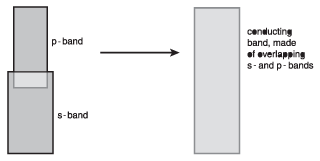
Figure 12.7In a metal, the difference in energy between filled orbitals and unfilled orbitals is very small. As a result, it's easy for electrons to jump to empty orbitals where they are free to move around the solid.
There are typically several conducting bands in metals. One band (called the "s-band") is caused by an overlap between all of the s-orbitals in the metal. The other bands are called the "p-band" and "d-band" because they result from the overlap of p- and d-orbitals, respectively. Because these bands overlap in energy, they behave as one large, partially filled band:
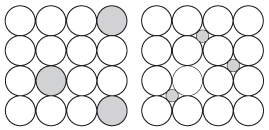
Figure 12.8When the s- and p-bands overlap in energy, they form a much larger band that makes it possible for metals to conduct electricity.
Other elements are sometimes added to metals to give them desired properties such as hardness, durability, or strength. The resulting material is referred to as an alloy.
There are two types of alloys:
- Substitutional alloys form when one of the atoms in a metal is replaced with a different element. For example, in sterling silver, some of the silver atoms are replaced with copper.
- Interstitial alloys form when some of the spaces between the atoms in a metal are filled by smaller atoms. One of the most important interstitial alloys is carbon steel, in which carbon atoms are located between iron atoms.
Molecular Meanings
An alloy is a metallic material in which several elements are present. The elements added to a pure metal to form an alloy are selected to maximize a desired property.
These two types of alloys are shown in the following figure.

Figure 12.9The picture on the left represents a substitutional alloy; the picture on the right represents an interstitial alloy.
Network Atomic Solids
Network atomic solids are formed when many atoms are bonded together covalently to form one gigantic molecule. Unlike regular covalent molecules that are generally small, network atomic solids may grow quite large. One common example of a network atomic solid is a diamond:
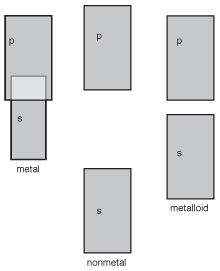
Figure 12.10The carbon atoms in a diamond are all held together by covalent bonds. As a result, diamonds can be thought of as being very large covalent molecules.
Network atomic solids have a wide number of varying properties. They are usually hard, owing to the strong bonds between neighboring atoms—for example, diamonds are (currently) the hardest known material. They also tend to have high melting and boiling points due to the very strong covalent bonds. Network atomic solids are frequently brittle because a small movement of atoms in the crystal tends to disrupt the network of covalent bonding. Aside from diamonds, some common network atomic solids are quartz (SiO2), graphite, and silicon.
When elements form network atomic solids, their atomic orbitals (s- and p-orbitals) overlap to form conducting bands in the same way that metals do. However, there is one major difference in the structure of the bands between metals, nonmetals, and metalloids. Whereas the s- and p-bands overlap in metals to form a giant conducting band, they don't for either nonmetals or metalloids, making it difficult for either to conduct electricity:
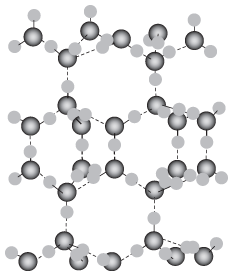
Figure 12.11Left to right: the s- and p-bands for metals, nonmetals, and metalloids. Note the large energy gap between the s- and p-bands for nonmetals (causing them to be insulators) and the small energy gap for metalloids (making them semiconductors).
Because the s- and p-bands overlap in metals, they are good conductors of electricity. In nonmetals, there is a large energy gap between these bands (called, straightforwardly enough, the "band gap"), making it difficult for electrons to travel from one to another—as a result, they are good insulators. In metalloids, the band gap is small, which means that it is possible for electrons to jump from one band to another, causing them to conduct partially. This explains why metalloids are called "semiconductors."
The Mole Says
A few network atomic solids, such as graphite, conduct electricity. However, these are much less common than insulating network atomic solids.
Molecular Solids
So far, we've talked about solids that are held together by chemical bonds. However, what happens when we make a solid from small covalent compounds, such as water, to form ice?
As it turns out, covalent molecules interact with one another through forces referred to as "intermolecular forces." Though we will spend more time speaking about intermolecular forces in Liquids and Intermolecular Forces, you can think of them as being Scotch tape in a world of Crazy Glue covalent bonds and ionic attractions. Though intermolecular forces don't possess nearly the strength of ionic attractions or covalent bonds, they are still strong enough to hold covalent molecules together in a solid. One example of a molecular solid is ice:
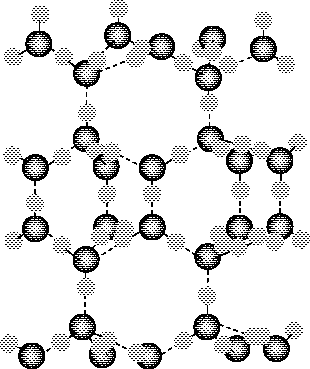
Figure 12.12The dotted lines in this structure correspond to the intermolecular forces holding the water molecules together in the crystal.
Intermolecular forces are weaker than chemical bonds, making molecular crystals less tightly held together than other forms of crystals. As a result, molecular solids frequently have low melting points and are easily broken apart. Molecular solids are also extremely poor conductors of electricity. Aside from ice, other examples of molecular solids are sugar and dry ice.
Atomic Solids
Atomic solids are formed when the noble gases become cold enough to freeze. As with molecular solids, there are very weak intermolecular forces known as "London dispersion forces" that hold these atoms together. Because their interactions are extremely weak, frozen noble gases tend to be soft and have very low melting points. (See Liquids and Intermolecular Forces for more about London dispersion forces.)
Amorphous Solids
Some solids don't have a particular structure. Instead of being arranged into a regular crystal lattice, the atoms bond in irregular and nonrepeating patterns. These materials are referred to as amorphous solids.
As a result of this unusual bonding, amorphous solids have a very wide range of properties. Some amorphous solids, such as window glass, are hard, brittle, and have a high melting point, while other amorphous solids, such as rubber or plastic, are soft and have very low melting points.
Excerpted from The Complete Idiot's Guide to Chemistry © 2003 by Ian Guch. All rights reserved including the right of reproduction in whole or in part in any form. Used by arrangement with Alpha Books, a member of Penguin Group (USA) Inc.
To order this book direct from the publisher, visit the Penguin USA website or call 1-800-253-6476. You can also purchase this book at Amazon.com and Barnes & Noble.







